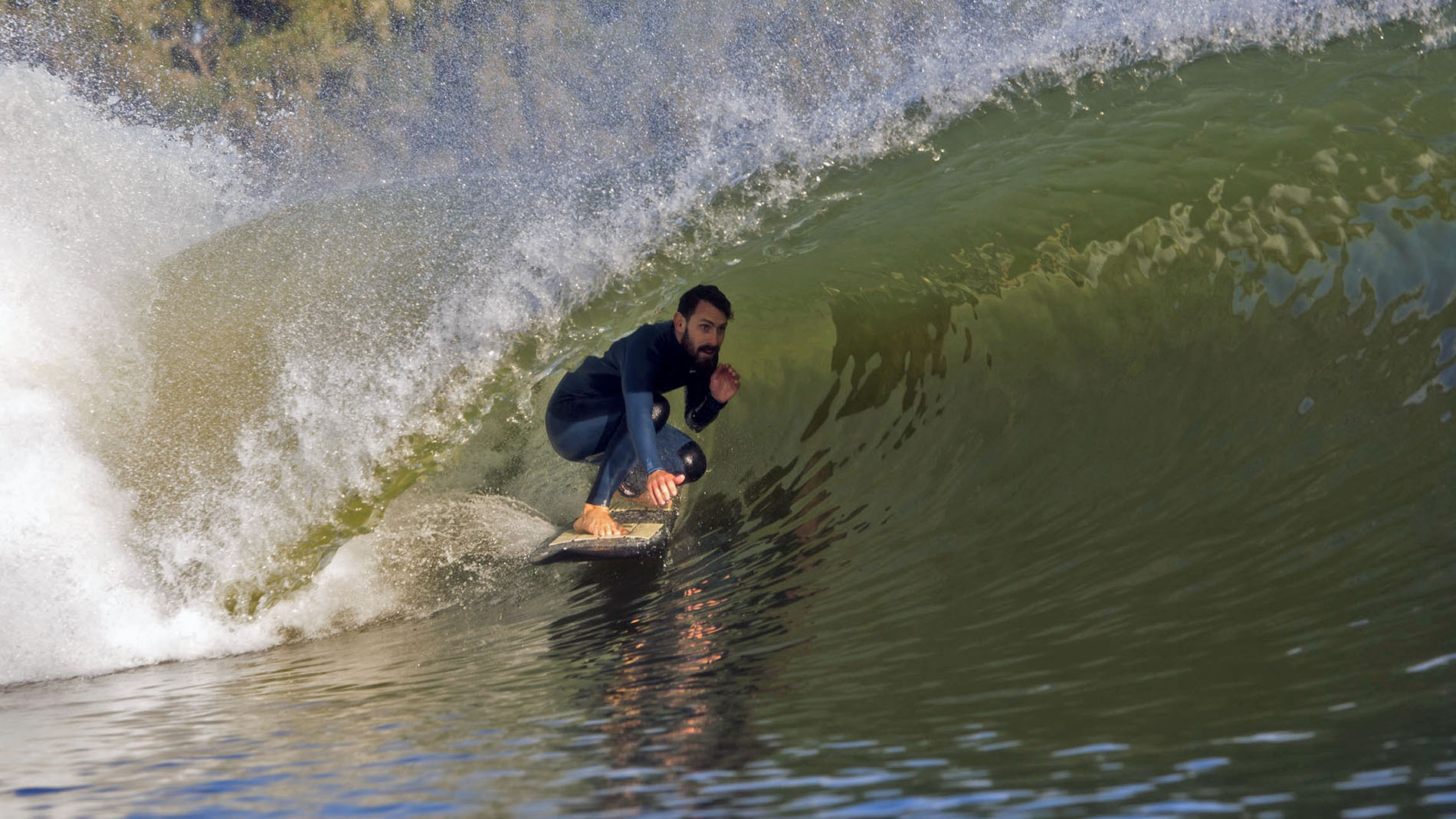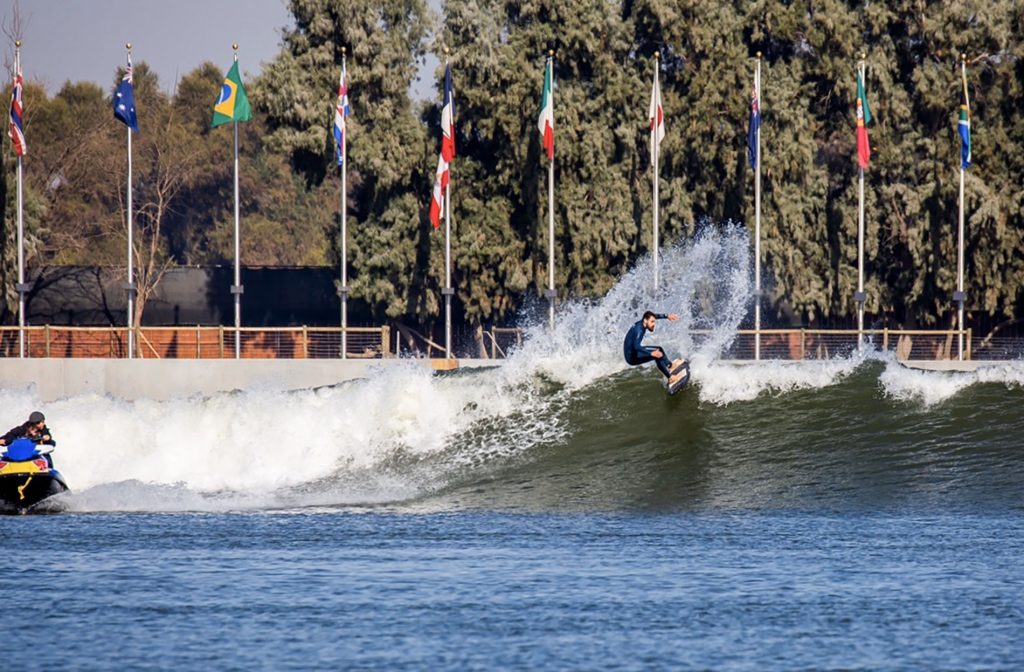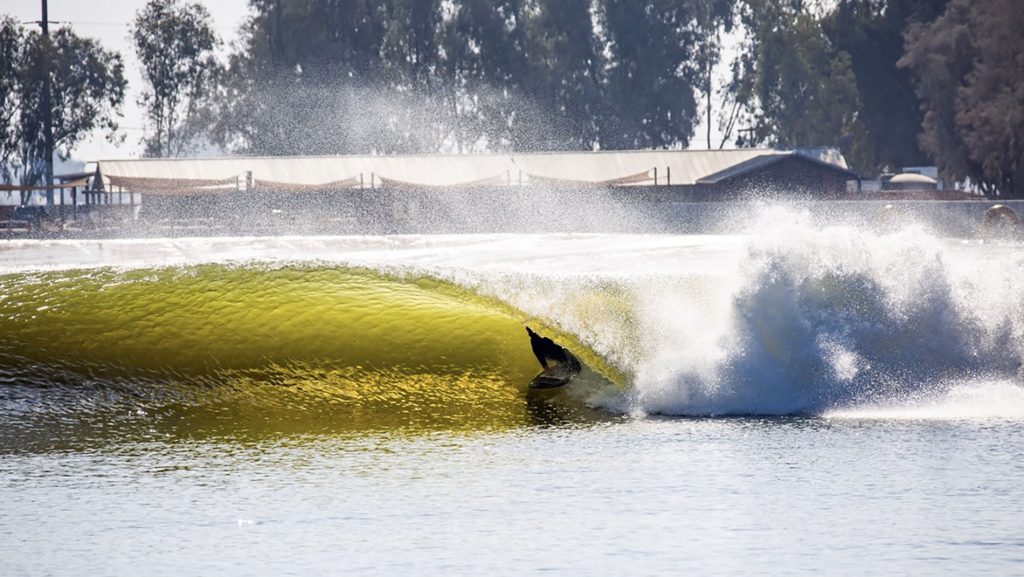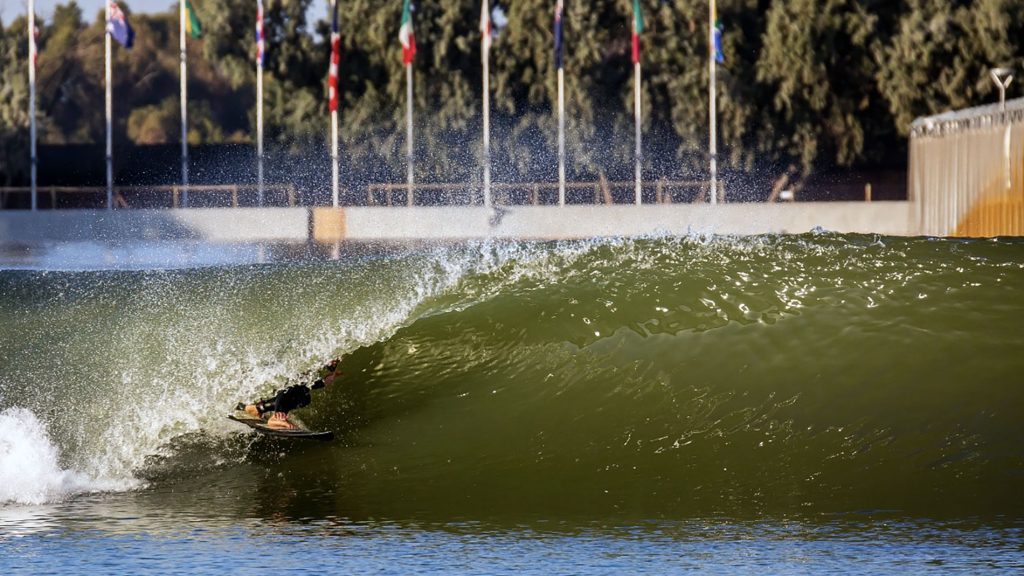AdviceLine: How to get the most out of Kelly’s wave pool

While pros make any pool session look stellar, we are more interested in the experience of the average surfer because let’s face it, most of us are average surfers. Rob Wagner reached out to us with a modest prompt to check out an edit from his session at Kelly’s. Mr. Wagner labels himself a “no-name surfer” and said he was happy to talk about how a day goes for non-pro –– so we bit and checked out the edit. Turn out he’s a bit above-average, but his insights into the workings of Kelly’s Wave are bonified nuggets of information valuable to anyone considering a trip to the field of dreams in Lemoore.
What we learned: It helps to have a contact (in this case a friend of a brother-in-law that happens to be a golden ticket winner but also now books groups when the opportunity arises.) Can’t do that? Call up the WSL or check-in with Kelly’s here. You can score a session for just under $300 per wave. But in Rob’s case, jumping in the pool with less experienced surfers who blundered a few waves allowed him to poach the pieces, shoring up his wave count.

What’s your surfing background and do you see wave pools in your future?
My time on a surfboard started at a very early age in Southern California thanks to my Dad. It took me until around 11 to get seriously into surfing and I’ve been hooked for a solid 22 years since then. These days I reside in San Clemente, you can typically find me at Trestles and I’m most consistently in the water at Church. I honestly couldn’t be more excited about wave pools! With all these different technologies and wave types that are currently being developed, I think it will be extremely interesting to see the impact it has on our sport.
It looks like an amazing session. How did it all come together?
How I got to go to Kelly’s wave is, unfortunately, the toughest question for me to answer because I’m still not entirely sure how coordinating a day, group or spot even works. They still have it all so vague. From what I understand the guy that was coordinating a couple of spots that I ended up jumping in on was a professional contact of my brother-in-law that just so happened to be one of the golden ticket winners, apparently after that experience, he maintained contact with people at the Surf Ranch and that’s how he’s gone about booking small groups to get back to the wave multiple times since. It seems to me that you don’t have to be entirely lucky with connections to get in though and If someone was serious about getting to surf the wave or booking a day they’d be able to contact the WSL directly to work something out.
What did it cost you?
The price point of the cost of a single wave is another tricky question with how the Surf Ranch is currently structured. The day costs $3,500 and it includes everything you could possibly need for a day of surfing. You literally could just show up and surf. The day starts at 6 am with breakfast being served and a safety briefing. There were 18 total surfers the day I was there and you are divided up into three groups of six with each group getting slotted into three total hours in the water. When it’s your hour window to surf, the staff gives you a sticker you put on your board and that indicates what flag you position yourself at in the pool and what direction the wave will be. There’s also water staff out there clarifying it all when a wave comes through. They run the waves split so you only get half waves which were actually the most surprising thing to me to find out when I got there. But they have the system dialed-in pretty well so that you aren’t disappointed. Essentially you are guaranteed four waves an hour at minimum with the opportunity to pick off more if someone falls. My first hour, due to half the people in the water being relatively inexperienced and not being able to make the wave, I found myself on 13 out of the 15 waves that were generated. A wave is produced every four minutes. I’d say all in all by the end of the day I rode at least 20 or so waves.

Did the price affect your approach to surfing Kelly’s?
With that all being said I’m still just your average working guy and that price point definitely affected how I surfed the waves. My approach was way more reserved than I would’ve liked because you don’t want to blow a wave when you spend all that money. Even if it’s a bonus wave you still want to make the most out of it and at the very least pack the barrel sections.
Was it tense and CT-like or a jovial bro-fest?
The overall vibe was very similar to almost any surf trip you could go on, except that everyone is stoked at an entirely different level knowing that they are about to score absolutely perfect waves.
Share with us something most people would not know about Kelly’s
I briefly touched on things people wouldn’t know unless they’ve been there and that is you split the wave and get staged at flags along the fence. The bottom is also flat concrete. Unrelated to the wave but there is also a lake next to the pool on the property that you can wakesurf or wakeboard. They also film all of your waves with various cameras and angles. There’s also a stationary camera at both ends of the pool that broadcast all the waves live over TVs around the facility and you can check out the footage as soon as you finish surfing.

What advice would you give to someone surfing Kelly’s for the first time?
My biggest advice for people prior to visiting is to watch all the footage you can of the wave since it’s relatively predictable. Also, try to not let your nerves get to you.
What else can you share with us that wasn’t covered?
I also forgot to mention there were three settings they ran the wave at while I was there. The first is CT-2 and this was my favorite, especially with a split wave because it barrels on both sections of the wave. CT-3 is more performance-oriented with a crumbly lip line and an inside barrel. Lastly, there’s the intermediate wave that is very similar to San Onofre and pretty much un-surfable on a shortboard.
Main Image by Pat Stacy via Rob Wagner
Related Coverage
